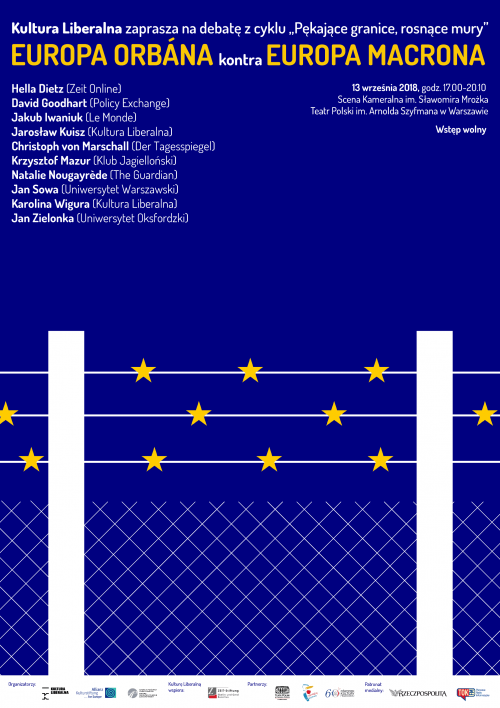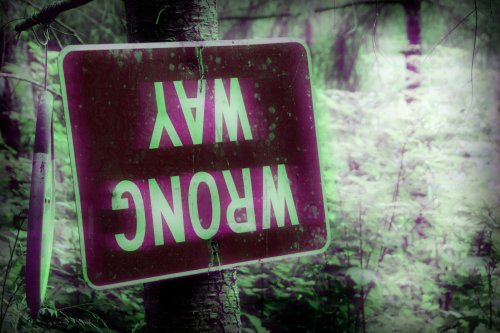The story of the production’s road to success has become an integral part of the movie itself and reflects the process of how the it developed from a rough idea for an animation degree diploma project at Łódź Film School into a fully professional production employing 131 people. Between 2003 and 2010, Kamil Polak has moved with his project from Łódź to Warsaw, started collaborating with more people and increased his budget up to a staggering 3 mln PLN (almost 1 mln USD). Over that time has been also carefully polishing a vision which had ‘epic’ written all over it.
Short animated movie vs 30 minutes of ads
Following a successful, two-year tour of world festivals (grand prize in Palm Springs and Las Palmas, among others), The Lost Town of Świteź finally makes it to Polish cinemas. The decision to distribute it also on large screen, and not only online and on

DVDs was on one the hand obvious, given the large scale of the project; on the other, also quite brave, if not audacious, if we consider how different this movie is from the usual cinema repertoire. But the benefit of viewing Polak’s wide shots on a large
screen goes without saying. The movie emanates an inimitable energy and mastery in setting the atmosphere which clearly shows that Polak is much more ahead of similar animation directors of
The incredible allure of The Lost Town of Świteź stems from the fact that even before the spectator is done watching it, the story wins them over to its side and makes them believe that what they are watching is more than ordinary. Sadly, this concerns only those who actually had the chance to see the movie. How many people in the near future will watch Polak’s film? The audacity of the distributors lies in the attempt to promote a product which, for more than one reason, is generally considered to be impossible to sell on a large scale.his age. The Lost Town of Świteź also bears witness to the power of very clear visual thinking, which in Poland is almost exclusively present among the creators of animation.
This is a short film – a genre that generally is doing very well nowadays, but that circulates in a closed circuit and almost never makes it to cinemas, let alone cinema multiplexes (The Lost Town of Świteź is screened in some studio cinemas before other movies). Renouncing the tradition of screening short films before a feature movie is one of the negative consequences of the free-market freedom that cinemas get in planning their repertoire. Instead, what we get is 30 minutes (sic!) of adverts and movie trailers, which is 10 minutes more than the movie of Polak.
Moreover, the movie is, of course, animated. Animation has been hugely successful when it comes to family entertainment (think Disney and Pixar), but when it comes to movies that feature imagery far from resembling their Hollywood counterpart, they are almost absent in the cinema menu. Admittedly The Lost Town of Świteź does have the large-scale verve and vigour characteristic of a Hollywood production. But at the same time it demands a whole different reading than the American movies (which are great in themselves). It has become generally acknowledged that the most interesting movie creators in Poland are the ones that deal with animation, such as Piotr Dumała (Polak’s artistic supervisor). However, an average movie-goer rarely gets a chance to learn this for himself.
Slavic post-modernism
The third reason why The Lost Town of Świteź may struggle from the beginning is the literary inspiration behind it. We may all still have a certain admiration for the literary works of the Romanticism age, but the moment some people learn that this is an “adaptation of Mickewicz”, they are likely to become discouraged by the haunting memory of the schooldays when these kind of things were the height of boredom. It risks also being condemned as an attempt to earn money off students who will be forced by their schools to

Alas, The Lost Town of Świteź has successfully avoided those mistakes and it is a gem composed of paradoxes. If the realization of the movie was a true ordeal, the final effect is seamless. Polak retains the atmosphere of a romantic ballad and recreates its Slavic spirit, even if his vision is a post-modernist mix of pictorial, film and musical references. The Lost Town of Świteź displays also remarkable artistic cohesion – although much of it has been inspired by the style of 19th-century oil paintings as well as the older art of icon painting, it makes a full use of both the traditional and the computer 3D animation technique. On top of that, Polak translates the Mickiewicz’s verses into an audiovisual feast where not a single word is pronounced.watch the adaptation of a classic in the cinema.
The whole movie is about enchanting the spectator with the images. The opening scene in The Lost Town of Świteź is a shot overlooking the surface of a lake covered with lilies. As the mist disperses, the shot closes up. The sunset coincides with the first sounds of the storm. Next thing we see, a carriage in entering a forest path. The coachman whips the horse, the action gains momentum. We see a young man, quite similar to the poet Mickiewicz himself. Upon the sighting of a woman standing in the middle of the road, the carriage stops. The young man looks around, and having spotted burning arrows among the trees, he runs for his life towards the lake. He jumps into the water and he submerges into its depths. Unexpectedly, he ends up at a medieval city. This settlement is later on set on fire by the Tatars and its inhabitants begin praying for a miracle to happen….
Already this initial summary points to which aspect of romanticism Polak refers to in his movie. He wants to recreate the dark and unsettling atmosphere of mysticism, showing the darkness of the woods, the ambiguity of the moonlight. The Lost Town of Świteź reaches to fantasy as a genre and the visual suggestiveness that is embedded in the ballad, making the movie resemble a series of paintings of such artists as Aleksander Gierymski or Józef Chełmoński (before the animation, the team prepared hundreds of real paintings). By entering the 19th century and submerging into the past, we are transferred into a world where people look like Byzantine icons that have come to life.

Little big epic
In the movie there are even more references to the history of art, and Polak himself does not shy away from revealing where his inspirations come from. The soundtrack is a key element of the movie. The choir and orchestra, composed by Irina Bogdanovich from Russia who has been living in Warsaw for the the past 10 years, are a clear reference to Eastern Orthodox music. Just like The Lost Town of Świteź, they are an emotional pastiche of old styles in art. Bogdanovich’s pieces, composed before the movie has been completed, have also influenced the visual side of the film.
„I wish I could create a single shot which would so completely absorb the spectator, that everything else around them would cease to exist” said Polak one day. Watching the movie, you can definitely feel the director’s determination to make that dream come true. Piotr Dumała has complimented The Lost Town of Świteź calling it ‘an ornamental abstraction’, which certainly means a lot, coming from the mouth of such an authority among animators. What is interesting is that while displaying an overwhelming visual and musical vision, The Lost Town of Świteź remains an understandable, slightly naïve movie with a pinch of kitsch (the closing scene lilies). This movie is a little big epic, a story of a battle and of wonders, that was born out of a little boy’s imagination.
The array of stunning images has made on me a lasting impression: the crazy ride through the woods, the static, wide shot of the row of soldiers saying goodbye to the people before setting out for the battle with the enemy; the moment the Tatars light their arrows, which look like hundreds of fiery dots against the night sky; finally, the ecstatic way into heaven where Jesus awaits, surrounded by an army of angels. This is possibly the first such an important animated movie from a young artist since Tomasz Bagiński’s Catherdal. Make sure to look for the Lost Town of Świteź in cinemas.
Movie:
Lost Town of Świteź, dir. Kamil Polak, Polska 2010.




